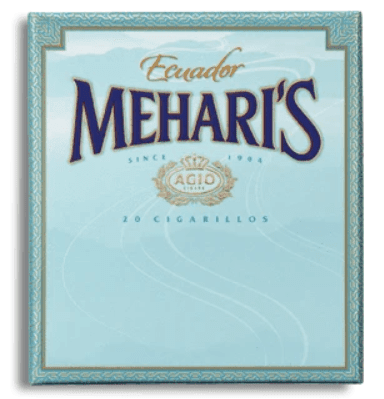A Brief History of Agio Mehari’s Cigars

Today, Mehari’s Cigars is the 3rd most popular cigar distributor in the world, and many of us are unaware of just how long the brand has been in production. Technically, Mehari’s dates back to 1904, but the company has seen huge changes over the years, most of which have been positive and are responsible for the success the company continues to see today.
The Beginnings
In 1904, Jacques Wintermans of the Netherlands launched A. Wintermans & Sons, named after his father who funded his dreams of building a cigar company. With the money provided to him, Jacques established a small cigar factory by the Belgian border in a southern Dutch town called Duizel. In 4 years, Jacques’ brother Harrie joined him, seeing a lot of promise in the company’s future, and by 1911, the company was so successful that a new factory was built in the same town, which is the same factory from where we get Agio Mehari’s Cigars to this day. Between the years of 1913 to 1928, additional facilities were built to keep up with fast-growing customer demand. At the same time, the remaining Wintermans brothers joined Jacques and Harries.
In 1935, the company built their Agio brand, which was to become their most popular by far, and was to eventually become the new name of the company as a whole. While the company was enjoying rapid success, things came to a halt when the Nazis from Germany invaded the Netherlands, determining that only cigar brands that were willing to work in line with the Nazis would continue to have access to tobacco. Wintermans was one of the only companies that refused to cooperate with the Nazis, which interfered with their ability to continue operations. They barely got by through WWII by producing surrogate cigars under the brand name Intermezzo.
A New Name
The war ended in 1945, and the limitations placed upon the brand were finally lifted. In 1950, Wintermans formally changed their name to Agio. Then, in 1954, in honor of their 50th anniversary, they launched the Golden Harvest cigar which means extremely popular to this day.
In 1961, Agio added a larger, 800-person facility to their operations, located in Geel, Belgium. This was to be the most advanced cigar-manufacturing facility in all of Europe, being a testament to the company’s unparalleled success in their region of the world. A few years later, they moved a lot of their operations to Malta in order to cut down on manufacturing costs, which ended up closing in 1994 due to costs rising there as well.
Perhaps the greatest development of the company was the development of the bobbine system, invented by Agio in 1976. The bobbine system better automated the cigar-manufacturing process, which maintained the high quality standards the company was known for while greatly cutting down on manufacturing costs. Instantly, this allowed Agio to lower their costs on cigars, making them more affordable than the competition, which only enhanced their success further.
Mehari’s
In the early 1970s, Agio introduced the Mehari’s brand, which remains the most successful to this day. At the same time, the company acquired Balmoral and Panter, adding to their already impressive portfolio and securing their name as major players in the cigar industry. In 1985, they built a facility in Sri Lanka, followed by another in the Dominican Republic in 1990. By 2004, Agio was selling 800 million cigars a year.
Overall, Agio is a success story with origins in a different region of the world than what most of us are used to. But, the company is yet another to grow in the face of adversity, only to become an inspiration to cigar manufacturers of today while maintaining enormous success.
← Older Post Newer Post →
